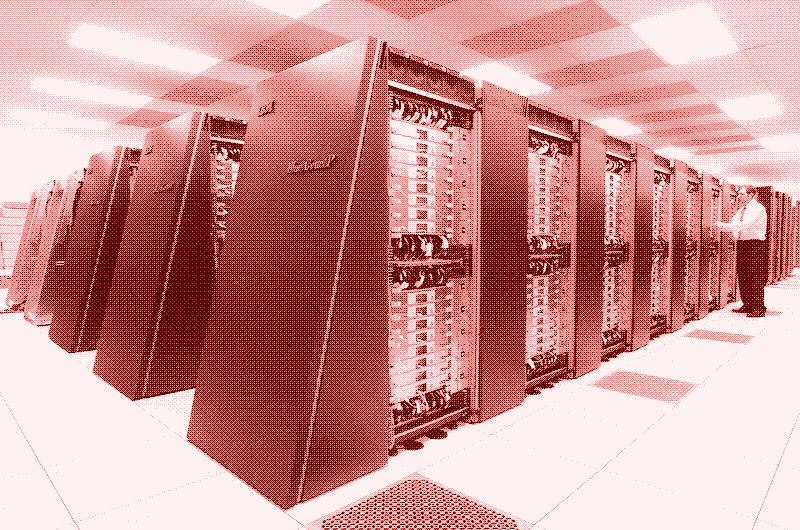
Supercomputers are becoming ever more important in scientific research, the financial world and big business. Their processing speed keeps growing. But even if we take into account future energy-saving technologies, the electricity use of these machines will become an insurmountable obstacle in 10 to 15 years time - says Alan Gara, developer of the world’s most powerful supercomputer.
IBM Designer fears that in 10 to 15 years supercomputers will consume as much energy as a jumbo jet taking off.
Last week, Europe’s fastest supercomputer was installed in the German Jülich Supercomputing Centre. The machine contains over 65,000 processors and a calculation power of 220 teraflops per second – all this is housed in 16 racks the size of a telephone box, and tied together with 10,000 metres of cables.
The machine is the first European specimen of the newest generation of supercomputers that market leader IBM presented in June: the Blue Gene/P. It concerns a modest version. IBM also sells a model that incorporates almost 300,000 processors in 72 racks, good for a calculation speed of 1 petaflop per second. This machine can also be combined into a supercomputer with almost 900,000 processors in 216 racks, and a calculation speed of 3 petaflops a second.
10,000 light bulbs
This calculation speed is staggering. But so is the energy use: 40 kilowatts for one rack. The machine in Germany consumes around 600 kilowatts of electricity – this is equal to 10,000 60-watt light bulbs. The energy use of the machines with a calculation speed of 1 and 3 teraflops rises to respectively 2.8 and 8.6 megawatts. That amount of energy needs to be doubled to account for the cooling that is needed to keep these machines running cool enough to operate. Aside from that, the calculators also produce near to 90 decibels of noise.
Nevertheless, the new IBM-supercomputer is extremely economical. It consumes per flop roughly ten times less electricity than its predecessor, the Blue Gene/L. The two-year old supercomputer of IBM in the Lawrence Livermore National Laboratory in California, currently number 6 on the list of fastest supercomputers worldwide, consumes (cooling included) 7.5 megawatts for a calculation speed of ‘only’ 76 teraflops.
Supercomputers are becoming ever more important in scientific research, the financial world and big business.
In spite of this considerably larger energy-efficiency, Alan Gara (the main architect of the Blue Gene Series) fears that the rising energy use of supercomputers will become an insurmountable problem in 10 to 15 years. He passed this sentence recently, during a conference in Germany (article in German). Gara poses that the calculation speed of the machines will keep rising, to about 200 petaflops per second between 2015 and 2020. But these machines will – even considering a 20 times more economical technology – consume up to 50 megawatts. This is as much as a Boeing 747 taking off.
Global warming research
Supercomputers are becoming ever more important in scientific research and business. They are used in domains like particle physics, nuclear fusion, genetics, material science, sociology and global warming – the latter is quite ironic because in some time supercomputers will have to apply the influence of their own energy use on global warming.
Supercomputers are also used for product development (like the development of cars and planes) and for the processing of the enormous amounts of information in the financial world. And the faster the machines become, the more applications appear and the more demand rises.
No solution
Alan Gara also said at the conference that at the moment there is “not one” solution in sight – we need a completely new computing technology. But he believes that engineers will find it once energy use becomes an acute problem.